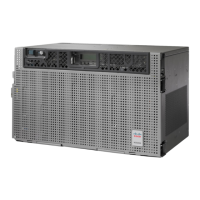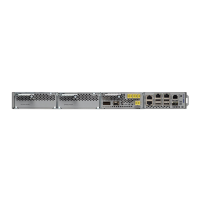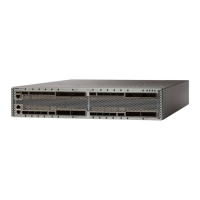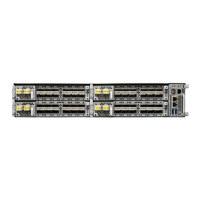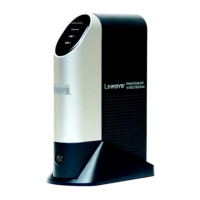9. For the two fibers belonging to the repaired span, identify the fiber for to the east to west (E–W) line
direction.
10. Repeat the procedures from Step 6, on page 73 to Step 8, on page 73 for the E–W direction.
DETAILED STEPS
Step 1 Verify the alarm validity.
Step 2 For both DWDM nodes connected to the repaired span:
a) Double-click the card reporting the issue.
b) Click Conditions.
c) Click Retrieve and verify that an APC-CORRECTION-SKIPPED condition is present on an aggregate port.
d) If the alarm is correctly reported, go to Step 3, on page 73. If not, close the CTC application, delete the CTC cache,
and open the CTC connection again. Then, go to Step 1, on page 73.
If the discrepancy persists, log into the Technical Support Website at http://www.cisco.com/techsupport
for more information or call Cisco TAC (1 800 553-2447) in order to report a service-affecting problem.
Note
Step 3 Measure the new Span Loss value after the fiber has been repaired.
a) In the node view (single-shelf mode) or shelf view (multishelf mode) of both nodes of the span, click the
Maintenance > DWDM > WDM Span Check tabs.
b) Click Retrieve Span Loss Values to retrieve the latest loss data.
The two values retrieved at each node level (west side and east side) refer to the two fibers coming into
the node from the adjacent nodes, so they apply to different spans. To complete the measurement in
Step 4, on page 73, the appropriate values must be taken into account.
Note
Step 4 Compare the Span Measurements of the previous step with the Span Losses values used during the network design
with Cisco TransportPlanner.
Step 5 For the two fibers belonging to the repaired span, identify the one for the W–E line direction. If the Span Loss Change
is greater than 3 dB, continue with Step 6, on page 73. If not, go to Step 9, on page 74.
Step 6 Clean the LINE-RX and LINE-TX connectors of the DWDM cards that manage the fiber of the repaired span. If the
problem persists, continue with Step 7. Otherwise, you are finished with the corrective action.
Step 7 If the alarm condition is still reported, we recommend that you again repair the fiber to reestablish the expected span
loss value. If this is not possible and the new value of Span Loss cannot be modified, move to Step 8 to fix the system
faulty condition.
Invisible laser radiation could be emitted from the end of the unterminated fiber cable or connector.
Do not stare into the beam directly with optical instruments. Viewing the laser output with certain
optical instruments (for example, eye loupes, magnifiers, and microscopes) within a distance of 100
mm could pose an eye hazard. Statement 1056
Warning
Before disconnecting any optical amplifier card fiber for troubleshooting, ensure that the optical amplifier
card is unplugged.
Note
Step 8 Follow the signal flow into the network starting from the repaired fiber.
a) In the first downstream node of the restored span (W–E), check whether a DWDM card reports the
APC-CORRECTION-SKIPPED condition on a port applying to the W–E direction (see Step 2, on page 73 for
how to do this).
Cisco NCS 2000 series Troubleshooting Guide, Release 11.0
73
General Troubleshooting
Corrective Action for Scenario 3
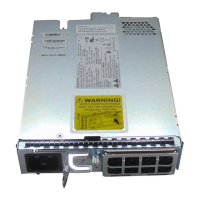
